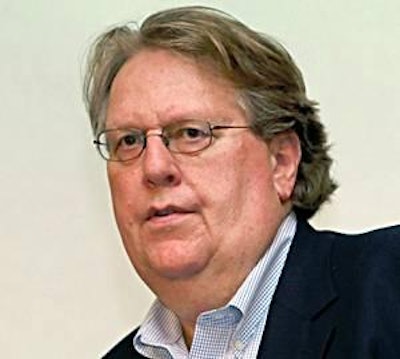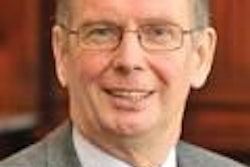
How can 9 billon people be fed and the planet maintained? This was the question asked at the IEC Prague 2010 Conference by Dr Jason Clay, the Senior Vice President of Market Transformation at the World Wildlife Fund. Dr Clay explained that globally we face an enormous challenge: “We have to figure out how to produce as much food in the next 40 years as we have in the last 8,000”.
The population will increase by 3 billion people during the next 40 years; at the same time people are becoming more affluent, moving from poverty to middle classes, and therefore able to afford more food and demand more animal protein.
At the moment, according to Dr Clay and the World Wildlife Fund, the world’s population multiplied by its consumption, is not equal to the planet. He believes that globally we are living above our means, and that this is no longer sustainable. Using the analogy of a farmer, Jason Clay explained that we are now eating our own seeds.
More with less
How can we produce twice as much with fewer resources? The answer is intensification. Dr Clay believes that we should be aiming to triple the amount of food we produce, in the hope that we will then succeed in at least doubling it. However, if our food production methods are already unsustainable, how can we produce twice as much food, without it being at the expense of our planet? When he addressed the delegates of the IEC Prague Conference, he explained: “We intensify; there’s no way around it”.
Over the next 40 years the world will have an additional 3 billion people to feed, the only way we can produce sufficient sustainable food, is if we focus on results and consider all possible efficiency measures.
“Focus on the result, not the technology – if you can do it organically, do it; if you can do it using cages, do it; if you can do it using barns, do it”, this was the message from Dr Clay.
Intensification is crucial; farmers must learn to do what they do better, and measure the things that matter. Correctly identifying the things that matter is very important; Dr Clay explained that too often people get distracted and focus on the things that are actually less import: “We need to look at the world in a different way, it’s more complicated than we thought; we need to be more subtle in our analysis”.
He used the example of locally produced food, and people’s perception that this creates less greenhouse gas because of reduced transportation. However, Dr Clay went on to explain that lamb reared in New Zealand, slaughtered, frozen and then transported to the UK, actually has a lower amount of greenhouse gases associated with its production than lamb produced and sold in the UK.
Should consumers have a choice?
“On a finite planet, should consumers have a choice about sustainable products?”
The World Wildlife Fund does not think so, according to Dr Clay. The organisation thinks that every product on the shelf should be sustainable.
Consumers often do not realise how much of nature’s resources have been used in the products they buy. The amount of water it takes to make a simple cup of coffee is staggering; it is not simply the water in the cup, but the water used to make the cup, make the plastic lid, given to the cows that produced the milk, used to make the coffee plants grow.
Globally we know that we need to produce more; egg production is predicted to increase by 120% between 2000 and 2050, and the World Wildlife Fund wants to assess what implications this will have on the planet?
Dr Clay went on to say that when discussing cages, egg farmers should not have to defend their use of cages and the size of the cage in a vacuum, as a solitary issue, independent of all other facts and considerations. He said that quality of life and animal welfare is more than simply the stocking density. Disease outbreaks, survival rates, time to market and medical intervention required are all important aspects of animal welfare.
Dr Clay urged the members of the IEC to be proactive in determining 6-8 key principles that egg farmers believe are important to strive to successfully produce more sustainable eggs: “Plan these things and decide for yourselves before someone else decides for you; because it will happen”.
“We need to shift our thinking, stop trying to maximise any one variable, and start optimising the key ones”. Dr Clay reiterated the message from Dr Jeff Armstrong, about the importance of taking a holistic approach.
Holistic approach
Dr Clay stressed how important it is for industries to work together, for example egg production and feed production. China has a high demand for pork products; to enable it to supply the demand it imports soy from Brazil and Argentina to feed its pigs. However, Brazil and Argentina have had to use land that was previously rain forests to grow the soy. The World Wildlife Fund wants agricultural industries to understand that there are global implications to producing large quantities of food. Dr Clay asked the IEC audience if they thought that the loss of the rain forests in Brazil and Argentina was a better option than importing GM crops from the United States.
Jason Clay believes that the world now needs to focus on genetics; hybrid corn is four times more productive than non-hybrid. He stressed that genetics could be used to increase productivity and provide suitable substitutions, to enable us to stop using scarce material where alternatives exist. This could help to solve the problem of how we can produce twice as much food without destroying our planet.

















